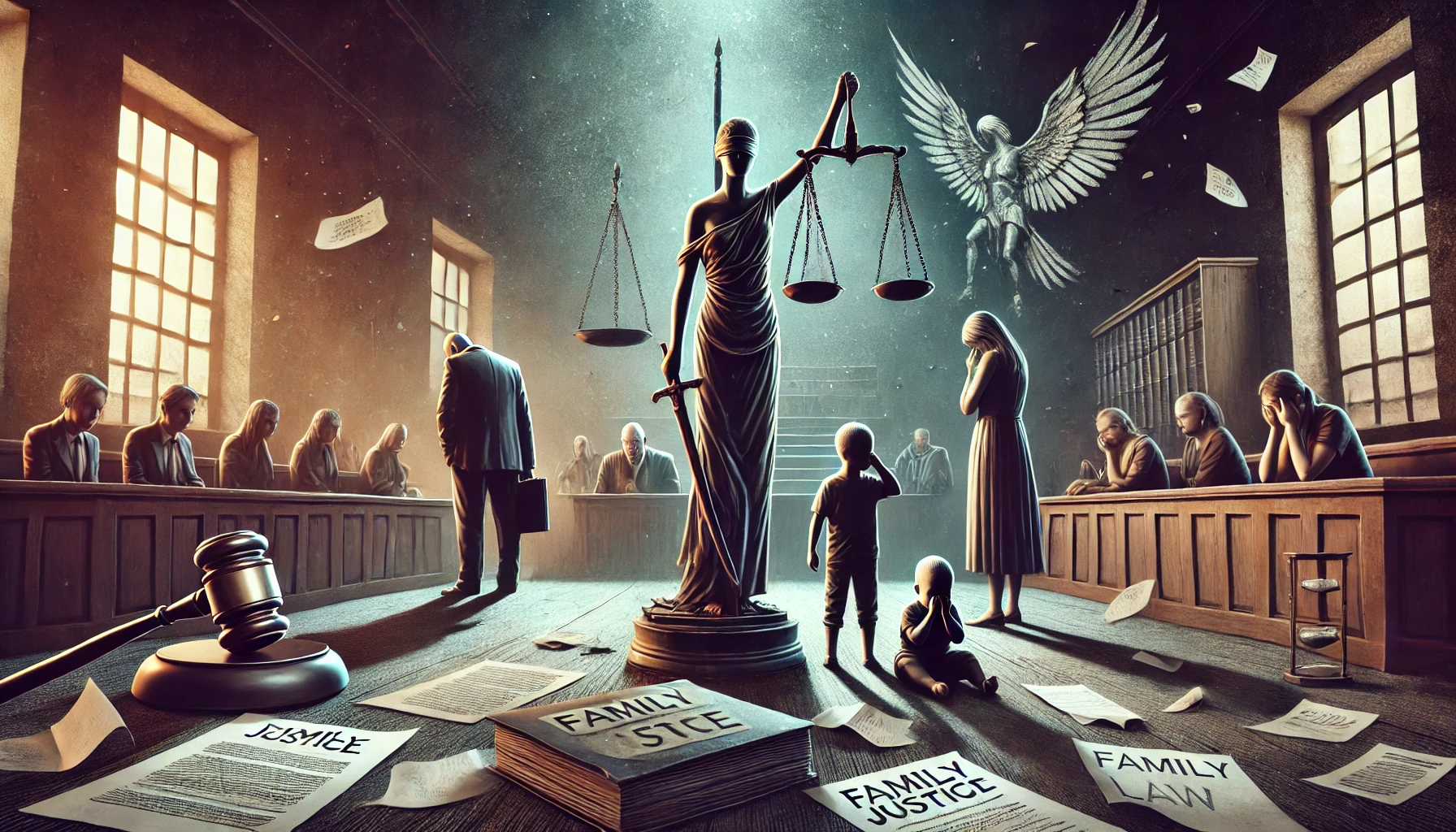Authored By: Anushri Dissanayake
Middlesex University - Dubai
This article examines the ongoing discussion about whether the UK should codify its constitution. While a fully written constitution might not be realistic at this stage, the article suggests that small, gradual reforms could address some of the democratic issues highlighted by recent events like Brexit and the COVID-19 pandemic. By looking at legal theory, real-life examples, and how other countries handle their constitutions, the article argues that a “semi-codified” approach combining elements of both written and unwritten law could be a practical way forward. Such a solution would aim to make the UK constitution clearer, more accountable, and better able to meet the needs of a modern democracy.
In the wake of Brexit, defined by legal disputes, executive overreach, and public distrust of democratic institutions, a critical constitutional question arises regarding whether a written constitution would have provided the United Kingdom with a more stable foundation. The 2019 prorogation of Parliament ultimately declared illegal in R (Miller) v The Prime Minister and the uncertainty during the Brexit process exposed serious weaknesses in the UK’s uncodified constitutional structure. In contrast to the most modern democracies, the UK relies on a patchwork of statutes, conventions, and judicial precedents, rather than a single deeply rooted constitutional document. This flexible arrangement has under growing criticism for enabling legal uncertainty and inconsistent accountability. The UK’ s constitutional landscape is historically secured in principles such as parliamentary sovereignty and the rule of law, famously articulated by A.V. Dicey.1 However, contemporary scholars such as Vernon Bogdanor and Jeffrey Goldsworthy have challenged the adequacy of these traditional doctrines in the face of modern democratic demands.2 The Human Rights Act of 1998, while a significant step in the protection of rights, has further stirred debate over whether a more accurate, established framework is necessary to unite constitutional principles and stop administrative overreach.3
This article explores whether codifying the UK constitution would enhance legal certainty, strengthen democratic accountability, and improve the balance of power among state institutions. It begins by examining the existing framework and its theoretical foundations. It then explains what a written constitution entails, referencing comparative models such as the United States and Germany.4 The main arguments for and against codification, are critically assessed and evaluation of implementation challenges and reform alternatives. Ultimately this analysis aims to determine whether a codified constitution could offer greater stability and legitimacy in an increasingly volatile political landscape.
As mentioned earlier, most modern democracies, the United Kingdom operates without a single codified constitutional document. Rather, its constitutional structure is scattered over a network of laws, customs, common law principles, and historical texts. Even though this structure survived centuries of political change, recent constitutional crises have raised concerns about its inherent uncertainty. The foundation of the UK’s uncodified constitution lies in key statutes such as the Magna Carta 1215, the Bill of Rights 1689, the European Communities Act 1972 (now repealed), and the Human Rights Act 1998.5 These documents establish the limits of governmental power, the rights of citizens, and the supremacy of Parliament. In addition to these, there are unwritten conventions that govern political behaviour. The Salisbury Convention, for instance, ensures that the House of Lords does not oppose legislation promised in the governing party’s manifesto.6 Similarly, the royal prerogative permits ministers to act in the name of the Crown without express parliamentary approval, although this power is now more constrained by judicial review.7
A.V. Dicey famously described the British constitution through two fundamental principles as parliamentary sovereignty and the rule of law. According to Dicey, Parliament holds the authority to make or unmake any law, and no person or body can override its legislation. In the meanwhile, the rule of law mandates that all individuals, regardless of their status, are subject to the law.
However, this idealistic concept sits uncomfortable in today’s politically charged landscape. The absence of a written constitution means there is no entrenched legal hierarchy to constrain Parliament or entrenched rights. Nor does the UK possess judicial supremacy, as found in jurisdictions like the United States or Germany5 The courts can interpret statutes and scrutinise executive action, but they cannot override legislation, even if it appears incompatible with fundamental rights.
This framework brings certain advantages. Its flexibility allows the legal system to evolve without the rigidity of formal amendments. It has provided a sense of continuity and pragmatism, allowing Parliament to remain the central authority, democratically accountable to the electorate. However, the criticism continues to grow stronger. The absence of codification creates confusion, not just for legal professionals, but for the citizens attempting to understand their rights. The reliance on political morality rather than legal enforceability contributes to fragile conventions, particularly when confronted by governments willing to test their limits. particularly when confronted by governments willing to test their limits. The clearest manifestation of this fragility came in Miller (No. 2), when the Prime Minister’s advice to the Queen to prorogue Parliament was deemed unlawful.8 The Supreme Court was required to base its ruling on fundamental ideas, parliamentary responsibility and the rule of law, as there was no constitutional text. The case demonstrated the advantages and disadvantages of an unwritten system: while the judiciary stepped in to uphold democracy, it did so from a position of legal uncertainty, lacking the clear textual authority found in codified systems.
A written constitution is a single, codified document that sets out the fundamental rules by which a state is governed. It establishes the framework of government, defines the distribution of powers among branches of state, and articulates the rights of citizens. A hallmark of written constitutions is their entrenchment as they are not easily amended and typically require a supermajority or special procedure, reflecting their foundational status. Most modern democracies, including the United States, Germany, and India, operate under such a constitutional model. The US Constitution, adopted in 1789, is one of the oldest and most rigid examples. It can only be amended through a complex process requiring significant political consensus, which has occurred only 27 times in over two centuries.9 The US Supreme Court has the power to overturn laws that are ruled to be unconstitutional, as was established in Marbury v. Madison (1803)2.10Thus, judicial review in the US is an effective means of upholding constitutional standards, despite criticism that it gives unelected judges an exc essive amount of discretion.
By contrast, countries like Germany and India maintain more comprehensive, yet flexible, constitutional frameworks. Germany’s Grundgesetz (Basic Law) enshrines human dignity, federalism, and judicial oversight as core values, enforced by a powerful Constitutional Court.11 India’s Constitution, while also codified and supreme, incorporates parliamentary principles and allows for more frequent amendment, balancing rigidity with political responsiveness.12 In the UK, judicial power is more constrained. Courts may interpret statutes and issue declarations of incompatibility under the Human Rights Act 1998 but cannot invalidate the Acts of Parliament.13
This stems from the enduring doctrine of parliamentary sovereignty, which positions Parliament as the ultimate legal authority.14 This contrast raises a vital question: should UK courts be empowered to invalidate laws that breach constitutional principles? A written constitution could grant them that power, but it would also disrupt the delicate balance between the judiciary and parliament, which has both constitutional risk and democratic potential.
As discussed in the previous section, written constitutions offer structural clarity, judicial enforceability, and entrenched protection of core values. But would these features translate into tangible benefits for the United Kingdom? This section argues that codification would strengthen the accountability systems that are necessary for a contemporary democracy while improving legal certainty, fostering judicial consistency, protecting fundamental rights, and establishing more effective restraints on executive power. One of the most persuasive arguments for a written constitution is the clarity it offers. Under the current uncodified system, core constitutional principles are scattered across statutes, case law, conventions, and political practice. As a result, both citizens and public officials often lack a clear understanding of the scope of their rights and responsibilities. In contrast, a written constitution would consolidate these principles into a single, accessible text. As Professor Mark Elliott notes, “[t]ransparency and accessibility are crucial to constitutional legitimacy in a modern democracy.”15
A codified constitution would also provide a firmer foundation for judicial decision-making. Under the current system, courts must interpret a mosaic of sources and frequently invoke abstract constitutional principles without textual authority. This was evident in R (Miller) v The Prime Minister, where the Supreme Court relied on broad notions of accountability and the rule of law to find prorogation unlawful, despite no express legal framework governing the issue.16 A written constitution would reduce the ambiguity in such cases by offering clear legal standards. As Goldsworthy argues, judicial interpretation would be more principled and less dependent on normative reasoning if anchored in constitutional text.17 Although the Human Rights Act 1998 (HRA) incorporates the European Convention on Human Rights into UK law, it does not entrench those rights. Parliament retains the ability to override the HRA through ordinary legislation.18 By contrast, a written constitution could elevate key rights to a supra-legal status, shielding them from routine political revision. This is a significant distinction. As Hickman notes, “The HRA often places the courts in an interpretive bind, caught between parliamentary sovereignty and the protection of human rights.” Codification could resolve this tension by empowering the judiciary to strike down legislation that violates constitutional rights, as occurs in jurisdictions like Canada and Germany.19
The COVID-19 pandemic and the Brexit-era prorogation saga both revealed how thin the limits on executive power can be in the UK. While courts can review ministerial decisions, their authority is constrained in the absence of constitutional text. In Miller I, the court reaffirmed that prerogative powers could not override statute; in Miller II, it declared that shutting down Parliament undermined democratic accountability.20 However, both rulings required significant constitutional creativity. A written constitution would reduce reliance on judicial improvisation by codifying the separation of powers and defining limits on prerogative authority. As the Bingham Centre for the Rule of Law argues, the UK’s “structural opacity creates fertile ground for constitutional overreach.”21 Codification would also reinforce the principle of checks and balances, a concept currently grounded more in political practice than legal obligation. The absence of a written constitution allows governments to test the limits of convention without formal legal consequences. It would be more difficult for any branch to overreach if institutional functions and procedures were enshrined in a constitutional framework. As Professor Alison Young contends, “a written constitution could provide a legal baseline for evaluating the proper operation of government and upholding constitutional morality.22
Consider the Brexit referendum and its chaotic aftermath. Would a written constitution have offered a clearer legal pathway? Possibly. It might have included provisions establishing supermajority requirements for constitutional referenda, guidelines for withholding participation in international agreements, and clearly defined functions for legislatures with devolution.
Constitutional uncertainty increased the legal uncertainty surrounding Article 50, the conflict between devolved nations and Westminster, and the executive’s unilateral instigation of withdrawal procedures.23 Codification could have offered a roadmap for orderly, lawful change,rather than forcing the courts to resolve political crises retroactively.
While the case for a written constitution often focuses on clarity and modernisation, critics argue that codification may bring more problems than solutions. The United Kingdom’s uncodified constitution, they contend, is a product of political evolution, not legal design, and its flexibility has been vital in adapting to crises. During the COVID-19 pandemic, emergency powers were swiftly enacted under existing legislation, such as the Public Health (Control of Disease) Act 1984, without the delays that might accompany amendment procedures under a rigidly codified constitution.24 Another major concern is the empowerment of the judiciary. Codification may shift power away from elected representatives towards unelected judges. The United States offers a cautionary example: the Supreme Court’s expansive interpretative role has sparked ongoing controversy over democratic legitimacy.25 If UK courts were given the authority to strike down Acts of Parliament, it could erode parliamentary sovereignty which is a foundational principle in British constitutional theory.26
There are also philosophical and practical questions about what should be included in a written constitution, whose principles it would uphold, and which rights would be given precedence. As Professor Iain McLean notes, “any codification exercise would quickly become a battleground of competing ideologies and identities”27 This raise concerns over constitutional identity. The UK’s constitution has functioned for centuries, adapting organically to social change. To many, the absence of codification is not a defect, but a feature of a unique political tradition. A.V. Dicey famously warned against legal rigidity, championing political morality over judicial supremacy.28 Modern critics like Vernon Bogdanor advocate for reform, yet even he acknowledges the difficulties in replacing a system that, for all its faults, has maintained democratic continuity.29 The debate, then, is not simply legal, it is historical, cultural, and deeply political.
Even if the normative case for a written constitution is persuasive, the practical barriers are still significant. The first and perhaps most significant challenge is political resistance. Codification would ultimately place formal restraints on executive discretion and necessitate a decrease in the legal primacy of Parliament. It makes sense that succeeding administrations have not been eager to voluntarily hand over authority to the judiciary or constitutional provisions. It makes sense that succeeding administrations have not been eager to voluntarily hand over authority to the judiciary or constitutional provisions. As Professor Stephen Tierney notes, Constitutional reform is “rarely pursued by those currently empowered by the system”.30 Additionally, public division regarding national identity, values, and rights poses a significant challenge. While issues like free speech or privacy may receive widespread support, others, such as the role of religion, devolution, or immigration, are likely to provoke polarisation. As McHarg and Walker point out, “a constitution cannot merely reflect elite consensus; it must resonate with the public at large”31 Without a shared constitutional vision, the legitimacy of any written document could be undermined. Additionally, the transition process might be intimidating. A complex web of statues, case law, and conventions makes up the legal system in the United
Kingdom.It would take careful drafting and considerable constitutional mapping to combine thes e into a logical defined framework.
Key questions arise: Should past conventions be included in the constitution? How would this affect flexible doctrines, such as the royal prerogative? Legal scholars like Barber and Young caution that any attempt to codify these concepts may risk “flattening constitutional nuance” in favor of oversimplification.32 A relevant case study is the Labour Party’s constitutional reform agenda in the late 1990s. While it succeeded in implementing devolution and the Human Rights Act, proposals for a full written constitution were ultimately shelved due to internal disagreement and political caution.33 This illustrates that even well-intentioned reform efforts may falter without a unified political mandate and public consensus.
While full codification may remain politically and culturally unfeasible in the near term, a growing school of thought supports semi-codification or incremental reform as a pragmatic compromise. Rather than creating an entirely new constitutional order, this approach would enshrine key principles in legislation while retaining the flexibility and adaptability that characterise the UK’s legal tradition. One clear candidate for reform is the adoption of a British Bill of Rights, replacing or amending the current Human Rights Act 1998. Such a document could clarify the status of rights in domestic law, while reflecting British legal values and traditions. However, critics caution that any attempt to “re-nationalise” rights protection must be done carefully to avoid diluting judicial oversight or marginalising minority protections.34 Another promising development is the potential codification of constitutional conventions, such as those outlined in the Cabinet Manual. Though not legally binding, the manual currently guides executive conduct, including ministerial responsibility and prerogative powers. Codifying and strengthening such conventions through statutes would help ensure that future governments cannot disregard unwritten norms with impunity.35 As Professor Peter Hennessy famously put it, “the good chap theory of government is no longer enough”.36
Reform through public consultation and constitutional commissions could also promote legitimacy and inclusiveness. The 2022 Independent Human Rights Act Review and earlier Royal Commissions on the Constitution have demonstrated that thoughtful constitutional debate can occur without polarising society.37 A phased public engagement process, similar to that in Iceland and Ireland, could establish a long-term constitutional framework that reflects shared values.38 As Elliott and Thomas argue, “it is not all or nothing. Meaningful reform is possible without replacing the entire system”39 In this sense, semi-codification offers a middle way: preserving the UK’s constitutional heritage while providing legal certainty, public accessibility, and enforceable standards. It may not solve every problem, but it could prevent the next crisis from becoming a constitutional drop.
The debate over whether the United Kingdom should adopt a written constitution is not just a legal matter; it also involves political, philosophical, and historical dimensions. This article has illustrated that while the current uncodified framework offers flexibility and continuity, recent constitutional crises, especially Brexit and the unlawful prorogation of Parliament, have highlighted its weaknesses. These events demonstrated a system that relies heavily on conventions and judicial improvisation, often lacking both legal clarity and public accessibility. Advocates of codification argue that a written constitution could offer legal certainty, stronger rights protection, judicial consistency, and clear limits on executive power. In an era of growing distrust in political institutions, such codification might also serve a symbolic function, reaffirming democratic principles and institutional accountability.40
However, as critics rightly warn, codification may introduce rigidity, empower unelected judges, and spark conflict over whose values a constitutional document should reflect.41 It is equally important to consider the practical barriers to implementation, such as political resistance, public division, and the technical complexity involved in integrating centuries of legal development. However, there is a middle ground between full codification and constitutional inertia, this middle path involves semi-codification and incremental reform. By strengthening the status of the Cabinet Manual and enhancing the legal enforceability of rights, a phased and participatory process could improve governance while still respecting tradition.42
In the end, the issue is not whether the UK must adopt a written constitution immediately. It is whether its constitutional system can remain resilient in the face of 21st-century challenges. As Vernon Bogdanor puts it, “a constitution must not only provide a map of power, but also a mirror of the nation’s values”43 Whether codified or not, the UK’s constitution must evolve to reflect the democratic, legal, and social realities of the modern age.
Bibliography
Legislation
Bill of Rights 1689 European Communities Act 1972 (repealed) Human Rights Act 1998 Magna Carta 1215 Miller v The Prime Minister [2019] UKSC 41 Marbury v Madison 5 US (1 Cranch) 137 (1803) R (Miller) v Secretary of State for Exiting the European Union [2017] UKSC 5
Books
Bogdanor V, The New British Constitution (Hart 2009) Cabinet Office, The Cabinet Manual: A Guide to Laws, Conventions and Rules on the Operation of Government (2011) Dicey AV, Introduction to the Study of the Law of the Constitution (10th edn, Macmillan & Co Ltd 1959)
Elliott M and Thomas R, Public Law (4th edn, Oxford University Press 2020) Hennessy P, The Hidden Wiring: Unearthing the British Constitution (Politico’s 1995) Ministry of Justice, The Independent Human Rights Act Review Report (2022)
Journal Articles
Bingham Centre for the Rule of Law, The Rule of Law in the Age of COVID-19 (2020) Daly TG, ‘The People’s Constitution: Public Participation in Constitutional Reform’ (2020) 18(3) International Journal of Constitutional Law 721 Elliott M, ‘The Case for Codifying the UK Constitution’ [2021] Public Law 202 King J, ‘The Democratic Case for a Written Constitution’ (2020) 81(2) Modern Law Review 228 McHarg A and Walker N, ‘The Constitutional Future of the UK’ (2021) Edinburgh Centre for
Constitutional Law Working Paper Series No 2021/2 McLean I, ‘What Would a Written Constitution Look Like?’ (2015) 6(1) Political Insight 38 O’Cinneide C, ‘A British Bill of Rights? The Uncertain Future of Human Rights Reform in the UK’ [2022] Public Law 46 Russell M, ‘Labour’s Constitutional Reform Agenda’ (2000) 71(3) Political Quarterly 303 Tierney S, ‘Written Constitutions and the Political Dynamics of Reform’ (2017) 70(2) Parliamentary Affairs 267 Young A, Parliamentary Sovereignty and the Human Rights Act (Hart 2009) Barber N and Young A, ‘The Rise of Prospective Judicial Review’ (2018) 77(2) Cambridge Law
Journal 263
Constitutions
Constitution of the United States of America Basic Law for the Federal Republic of Germany (Grundgesetz) Constitution Act 1982 (Canada)
Reports
House of Lords Library, Salisbury-Addison Convention LLN 2022/009 (2022)
1 A.V. Dicey, Introduction to the Study of the Law of the Constitution (10th edn, Macmillan & Co Ltd 1959).
2Vernon Bogdanor, The New British Constitution (Hart Publishing 2009); Jeffrey Goldsworthy, Parliamentary Sovereignty: Contemporary Debates (Cambridge University Press 2010).
3 Human Rights Act 1998.
4Constitution of the United States of America; Basic Law for the Federal Republic of Germany (Grundgesetz).
5 Magna Carta 1215; Bill of Rights 1689; European Communities Act 1972 (repealed); see also Human Rights Act 1998, cited above.
6 House of Lords Library, Salisbury-Addison Convention LLN 2022/009 (2022).
7 R (Miller) v Secretary of State for Exiting the European Union [2017] UKSC 5.
8(Miller) v The Prime Minister [2019] UKSC 41.
9 US Constitution amend V.
10 Marbury v Madison 5 US (1 Cranch) 137 (1803).
11 Basic Law for the Federal Republic of Germany (Grundgesetz), Art 1–20.
12 The Constitution of India, Preamble and Part XX.
13 Human Rights Act 1998, s 4.
14 Dicey (n1) [39–40].
15 Mark Elliott, ‘The Case for Codifying the UK Constitution’ [2021] Public Law 2021(2) 2021.
16 Miller (n 8).
17 Goldsworthy, Parliamentary Sovereignty.
18 HRA 1998.
19 Constitution Act 1982 (Canada), s 52; Basic Law for the Federal Republic of Germany, arts 1–20.
20 Miller (n 7); Miller (n 8)
21 Bingham Centre for the Rule of Law, The Rule of Law in the Age of COVID-19 (2020).
22 Alison Young, Parliamentary Sovereignty and the Human Rights Act (Hart 2009) 45.
23 House of Lords Constitution Committee, Brexit: Constitutional Implications (HL Paper 149, 2016–17).
24 Jeff King, ‘The Democratic Case for a Written Constitution’ (2019) 72 Current Legal Problems 1.
25 Richard H Pildes, ‘Is the Supreme Court Too Powerful?’ (2022) NYU Journal of Law and Liberty 18(2) 201.
26 Goldsworthy, Parliamentary Sovereignty.
27 Iain McLean, ‘What Would a Written Constitution Look Like?’ (2015) Political Insight 6(1) 38. 28 Dicey (n1).
29 Vernon Bogdanor, The New British Constitution (Hart 2009) 117–135.
30 Stephen Tierney, ‘Written Constitutions and the Political Dynamics of Reform’ (2017) 70(2) Parliamentary Affairs 267.
31 Aileen McHarg and Neil Walker, ‘The Constitutional Future of the UK’ (2021) Edinburgh Centre for Constitutional Law Working Paper Series No. 2021/2, 4.
32 Nick Barber and Alison Young, ‘The Rise of Prospective Judicial Review’ (2018) 77(2) Cambridge Law Journal 263.
33 Meg Russell, ‘Labour’s Constitutional Reform Agenda’ (2000) Political Quarterly 71(3) 303.
34 Colm O’Cinneide, ‘A British Bill of Rights? The Uncertain Future of Human Rights Reform in the UK’ (2022) Public Law 2022(1) 46.
35 Cabinet Office, The Cabinet Manual: A Guide to Laws, Conventions and Rules on the Operation of Government (2011).
36 Peter Hennessy, The Hidden Wiring: Unearthing the British Constitution (Politico’s 1995) 27. 37 Ministry of Justice, The Independent Human Rights Act Review Report (2022).
38 Tom Gerald Daly, ‘The People’s Constitution: Public Participation in Constitutional Reform’ (2020) International Journal of Constitutional Law 18(3) 721.
39 Mark Elliott and Robert Thomas, Public Law (4th edn, OUP 2020) 74.
40 Jeff King, ‘The Democratic Case for a Written Constitution’ (2020) 81(2) Modern Law Review 228.
41 Iain McLean, ‘What Would a Written Constitution Look Like?’ (2015) Political Insight 6(1) 38.
42 Mark Elliott and Robert Thomas, Public Law (4th edn, OUP 2020) 75–78.
43 Vernon Bogdanor, The New British Constitution (Hart 2009) 10.





